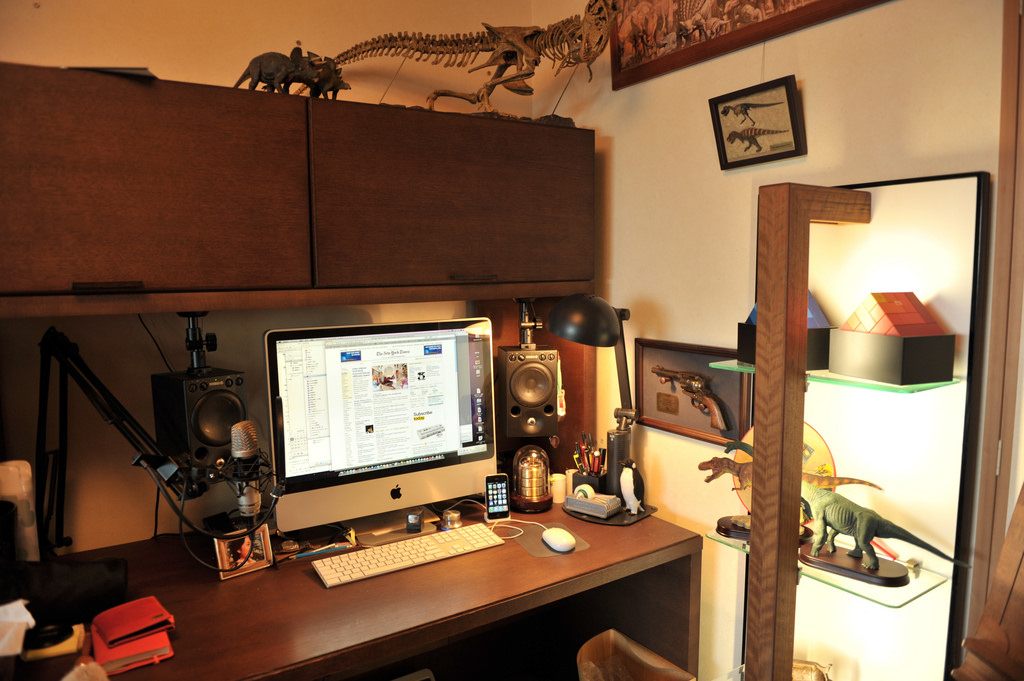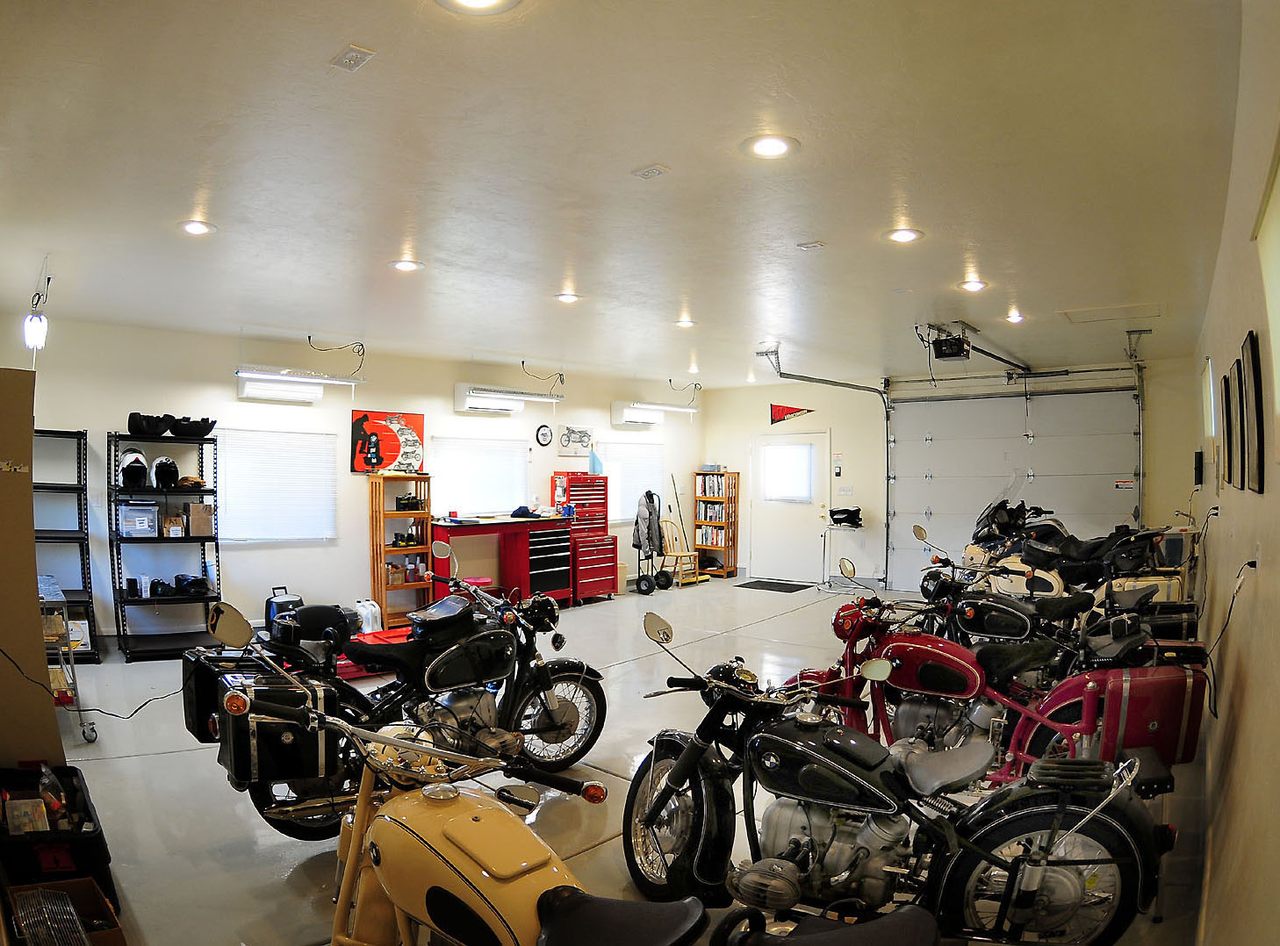How Man Caves Took Over America’s Basements
The male ego found a room of his own.
We’ve all heard this phrase before: man cave. Whether it’s in a hardware store commercial, a chagrined sigh from mom, or as a sitcom punch line, the man cave is, without a doubt, a part of our current homeowner vernacular. But what defines this space, and how did it get here? Of course, the history of the masculine-feminine dichotomy in interiors and architecture is a well-exhausted field, but few have covered the fact that the 30+ year increase in home size has created opportunities for new gendered spaces, and that these spaces are more than mere frivolity: they are an interesting piece of a changing social landscape.
So what are man caves?
A man cave usually develops in spare rooms, such as bedrooms, offices, finished basements, or recreation rooms. The garage, another traditionally masculine space, is more often a workshop or place to make repairs. Its connotation with work (often frustrating and unsavory as any viewer of Home Improvement can attest) as well as its thermal issues (it’s rarely cooled or heated like the rest of the house) demarcate it from the man cave, an interior space.

Most man caves are devoted to a man’s hobby, such as sports, music, or video games. In fact, the “theming” of a man cave is often what sets it apart from a mere recreation room or den. Theming in man caves is often a visual demarcation—it says this is my space and this is what I do in it. While the rest of the house often follows the interior design dogma of the woman, the mancave is the domain of the man, and is his space of self-expression. And it’s a pretty new thing.
While men have always had their sacred spaces in the home such as the garage or study, the domesticity of the 19th and early 20th century overall implied that the home was, of course, the woman’s place. In the previous centuries, men sought refuge outside the home in establishments such as gentlemen’s clubs (think more country club than strip club), and male-only social clubs and establishments such as the Freemasons.
While a few of these establishments remain today (mostly in cities or as historical places such as the Yale Gentlemen’s Club) they are few and far between in this egalitarian age. In the case of the Freemasons and other fraternal service groups, memberships are dwindling at an alarming rate, primarily because their core membership consists of elderly and retired persons, making these clubs stodgy or otherwise unappealing to young people.
In addition to the dwindling number of male-only public spaces, two other male-dominated spaces, the workplace and the university—have become more and more gender-balanced over the last 50 years. The participation of women in the labor force increased 53 percent in the years between 1963 and 2012, and the percentage of working mothers increased 30 percent. During the same period, the number of women to complete four or more years of college increased by almost 25 percent. The combined effects of the disappearing male-only clubs and the integration of women in academia and the workplace left men fewer and fewer places to be alone and to be, well, men.

The mancave is no doubt in part a response to these social changes, and this is reflected in the etymology of the word itself. The term “man cave” only entered the public lexicon in the last decade of the 20th century. It’s first recorded use was in the 1992 book Men Are From Mars, Women Are From Venus, by John Gray, who writes:
“[A man] becomes very quiet and goes to his private cave to think about his problem, mulling it over to find a solution. When he has found a solution, he feels much better… If he can’t find a solution then he does something to forget his problems, like reading the news or playing a game…”
The home, the former domain of the woman while the man worked, became increasingly gender-neutral. The task of parenting, once relegated to the woman and/or servants, has also seen these changes as more and more women seek long-term careers. In the last decade, the number of stay-at-home dads has doubled.
According to Paula Aymer, a professor of Sociology at Tufts University, in this new landscape where childcare becomes more equally divided between mom and dad, now “…both partners occasionally feel the need to retreat… [and] there’s value for a man wanting to declare his space as private, while the woman’s space is open to others in the family.”
Hence, the mancave, the bastion of masculine space backed by books dripping with machismo-rhetoric like Wayne Kalyn’s Guy Spaces: A Guide to Defining A Man’s Personal Space, and, of course, The Man Cave Book by Jeff Wilser and Michael H. Yost.
In an increasingly egalitarian world, will the man cave see a similar fate to its predecessors? While women-only spaces in the house are on the rise, with labels such as the “she shed” or “woman cave,” the concept hasn’t taken off in the same respect as the man cave, for the reason that much of the home is still demarcated as a feminine space in the popular eye. The woman’s need to escape the world of men is a relatively new phenomenon, after all. The man cave came first because men were losing their hold of the world, and sought to retreat to a place in the home where they could still possess feelings of power.
Perhaps man caves can be seen as a physical manifestation of changing social rules, with the rise (again) of feminism and gay rights. After all, the digital world is filled with man caves.

How long will this phenomenon last? As new generations of men become more adjusted to changing social norms, their need to assert aggressively masculine space will cede to their need to establish their own private rooms. The man caves of the future will be less assertively gendered, and their rhetoric will be less filled with terms like “asserting your dominance.” The need to escape the hassles of parenting, work, and yes, one’s spouse sometimes, will always be present. Marking one’s territory? Hopefully not.





















Follow us on Twitter to get the latest on the world's hidden wonders.
Like us on Facebook to get the latest on the world's hidden wonders.
Follow us on Twitter Like us on Facebook